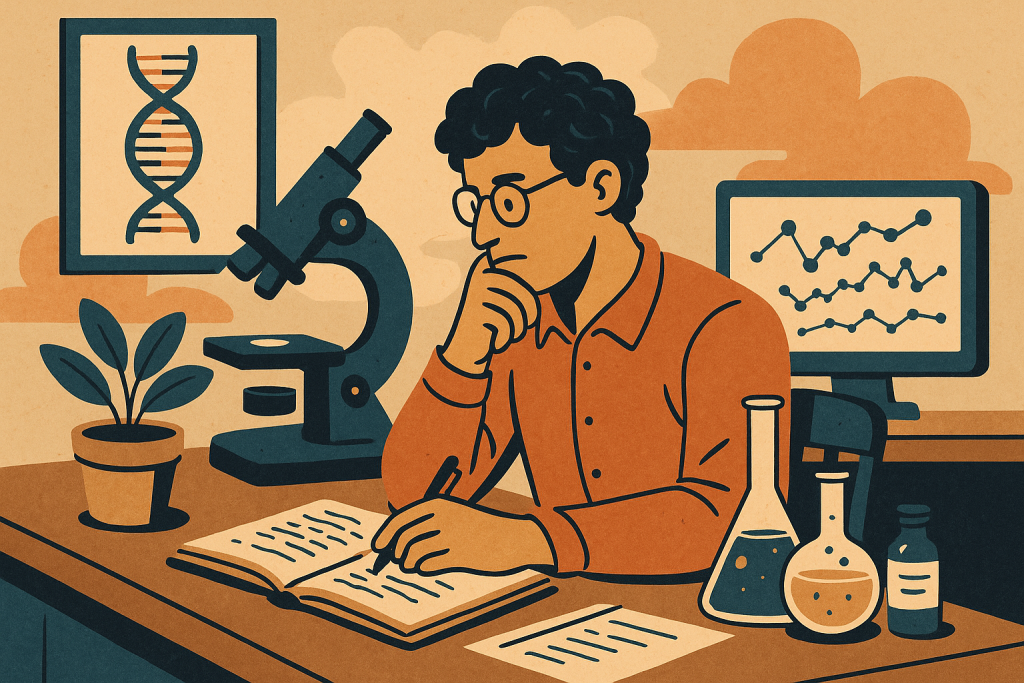The resurgence of slow research reflects a shift from pressure to churn out quick results toward valuing thoughtfully paced discoveries. This trend tackles issues like low reproducibility, burnout, and shallow “fast science,” offering a much-needed reset for academia.

What Is Slow Research and Why It Matters
Slow research mirrors the slow food and slow living movements, emphasizing care, sustainability, and quality over volume. It urges scientists to step back from the “publish or perish” cycle and instead pursue long-term, meaningful inquiries.
Unlike fast-paced research that often leads to oversimplified conclusions or unverifiable findings, slow research fosters deep engagement with data, robust methods, and truly novel insights. In fields from medicine to climate science, where stakes are high, this is increasingly crucial (Berg and Seeber 2016).
1. Addressing the Replication Crisis with Slow Research
One of the biggest criticisms of modern research is its replication crisis—a term used to describe the high number of studies that fail to produce the same results when repeated. According to a landmark effort by the Open Science Collaboration, only 36% of psychology experiments replicated successfully (Open Science Collaboration 2015).
Why does this happen? A significant factor is the push to publish frequently, which incentivizes cutting corners, exaggerating results, and neglecting long-term follow-ups. Slow research addresses these issues by prioritizing replicable designs, longer timelines, and robust peer reviews.
2. Trust and Transparency—Core Tenets of Slow Research
Public trust in science suffered major blows during the Covid‑19 pandemic due to contradictory studies and retracted papers. Many of these issues stemmed from the urgency to publish results without adequate validation.
Slow research restores credibility by embedding transparency into the research process. Practices such as open data, preregistration of studies, and registered reports are gaining traction. Journals like Nature and Science now encourage these practices to promote more reliable outputs (Nosek et al. 2018).
3. Curiosity-Driven Discovery Needs Time
Scientific discovery is not always linear or predictable. Breakthroughs often come from meandering paths of curiosity rather than rigid deadlines. In environmental sciences, for example, long-term ecological research stations have revealed trends that could never have been identified through short-term studies.
Similarly, in fields like physics or artificial intelligence, some of the most impactful theories and algorithms emerged from slow, iterative thinking rather than rushed timelines (ESA 2021).
4. Pressure, Productivity & the Case for Small Teams
Fast science often rewards large research teams with access to big data and fast publishing cycles. But there’s growing evidence that small teams working at a slower pace produce more innovative breakthroughs.
A 2020 study from the Proceedings of the National Academy of Sciences found that small teams tend to disrupt science and technology with new ideas, while large teams develop existing ones (Wu, Wang, and Evans 2019). This aligns perfectly with slow research principles: fewer people, deeper work, and a longer timeline can lead to more original outcomes.
5. Funding Models Are Shifting Too
The structure of research funding has historically favored short-term, deliverable-heavy projects. Grants often require biannual reports, “impact” statements, and marketable findings. But that’s changing.
Institutions like the Slow Science Academy in Germany are promoting models that prioritize depth over speed. Funders such as the Wellcome Trust and Horizon Europe are beginning to experiment with longer-term funding cycles, giving researchers the space to develop complex, thorough work (Bishop 2019).
6. Burnout and Mental Health in Academia
Fast-paced academic culture is taking a toll on researchers’ mental health. Studies indicate that nearly 40% of PhD students experience anxiety or depression, largely due to stress from unrealistic deadlines and pressure to publish (Evans et al. 2018).
Slow research offers a healthier model: one that allows scholars to engage deeply with their work without sacrificing personal well-being. Encouraging mindfulness, balance, and slower work rhythms could help reduce burnout and boost retention in academia.
7. Technology Isn’t the Enemy—It’s a Tool
While fast science is often associated with technological acceleration, slow research doesn’t reject tech. Instead, it reclaims it as a tool for thoughtful analysis. Tools like AI-powered literature reviews, reproducibility platforms like Code Ocean, and collaborative databases allow for more efficient yet deliberate research.
These technologies, when used thoughtfully, can support rather than rush the research process, aligning perfectly with slow research goals.
How to Put Slow Research Principles Into Practice
Researchers:
- Prioritize quality over output: Focus on a few high-impact projects.
- Use open science practices: Preregister studies, share your data and methods.
- Seek long-term collaborations: Build teams with shared values around rigor and integrity.
For Institutions:
- Reform hiring and tenure metrics: Value reproducibility, collaboration, and innovation over volume.
- Offer mental health support: Encourage balance and reward depth, not burnout.
- Support long-cycle funding: Back projects with timelines exceeding the typical 2–3 years.
For Funders:
- Develop grants for slow research: Tailor calls for complex, multidisciplinary work.
- Reduce bureaucracy: Simplify reporting requirements to allow researchers more time to research.
The Future: Why Slow Research Is Gaining Momentum
There is growing awareness across academia and industry that fast isn’t always better. The challenges of misinformation, irreproducibility, and researcher exhaustion demand a paradigm shift.
Slow research is not anti-progress. It is pro-responsibility. By embedding rigor, transparency, and curiosity back into the process, we don’t just protect the integrity of science—we future-proof it.
Conclusion
Slow research is making a return because it works. In a world obsessed with speed, it dares to go deep. It values process over performance, substance over speed, and integrity over influence. As institutions, funders, and researchers begin to realign their priorities, the question isn’t whether slow research can coexist with innovation—it’s whether we can afford a future without it.
References
Filip Vostal, A Sociology of Slow Academia (2025)
Read full-text PDF on ResearchGate
Aisha Lakshman, Normalizing Slow Science (2021)
View article on SciJust Blog
Wikipedia, Slow science (updated 2025)
See the Slow science entry on Wikipedia






